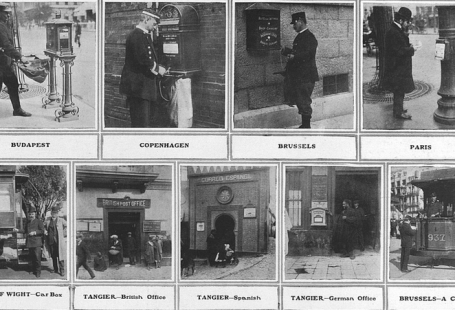On 24 and 25 August 1875, Captain Matthew Webb, a master mariner from Dawley in Shropshire, became the first person to swim the English Channel.
He swam from Dover to Calais, and completed the swim in 21 hours and 45 minutes.
Included below are two newspaper stories (published the day after his epic swim) that report on this historic feat.
Dundee Courier – Thursday 26 August 1875
Image © THE BRITISH LIBRARY BOARD. ALL RIGHTS RESERVED.
http://www.britishnewspaperarchive.co.uk/viewer/bl/0000162/18750826/020/0003
Staffordshire Sentinel – Thursday 26 August 1875
Image © THE BRITISH LIBRARY BOARD. ALL RIGHTS RESERVED.
http://www.britishnewspaperarchive.co.uk/viewer/bl/0000346/18750826/016/0003





3 comments On Captain Matthew Webb Swims the Channel – 24 and 25 August 1875
He swam from Dover to Calais, and completed the swim in 21 hours and 45 minutes.
The best account of Webb’s swim I’ve read was written by Arthur Payne, the sports editor of the London Standard and proprietor of the weekly journal Land and Water. He was one of the three ‘specials’ (correspondents) in the lugger that accompanied Webb and kept a detailed log on the epic feat of natation (as the Victorians liked to call it). One of the striking features of his report, which is carried a chapter on Webb’s career in the book ‘The Story of Your Life’, is the clearness of the sea at the time and the teeming marine life all around: I quote “5.0 p.m. Dover Castle just visible in the haze, NW by N; South Foreland N by W. Now over five miles from land; no wind whatever, sea like a millpond. I could see down three or four fathoms by shading off the light and numbers of fish, principally weavers and mackerel, could be seen while all round porpoises were rolling – in fact the whole sea appeared alive with fish.”
A bit different from today’s grey and polluted Channel!!
Captain Webb was indeed a great swimmer, although ultimately somewhat foolhardy. On July 2, 1883, he entered the water at the foot of Clifton Hill in Niagara Falls in an attempt to swim the rapids. Although warned that it was a suicide mission, he was determined to conquer the rapids. He was wearing a red bathing suit, but no life preserver. As crowds watched, he was seen to disappear beneath a huge wave. His body was found four days later at Lewiston, New York.